Last year, the total number of pigs in the EU stood at 141.55 million head according to Eurostat, 2.9% less than the previous year, and the lowest it has been in the last 10 years.
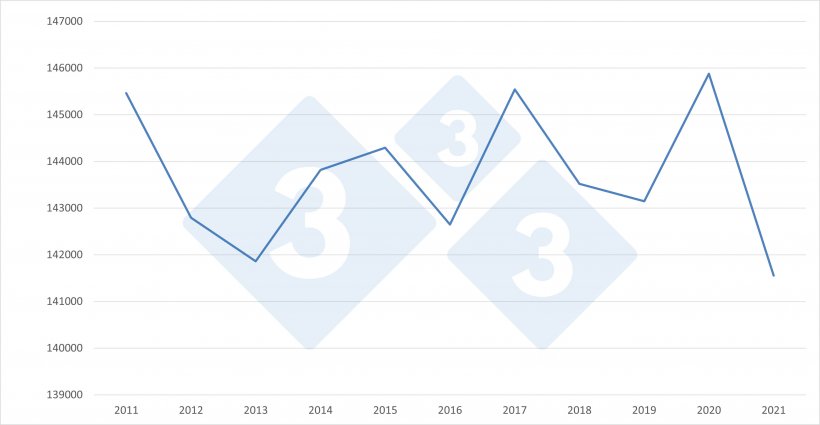
Evolution of the total EU27 inventory.

Contrary to last year, the decrease occurred in all categories. The largest decrease was seen in finishing pigs with a reduction of 3.94%, followed by sows (-3.58%) and to a lesser degree piglets (-0.62%).
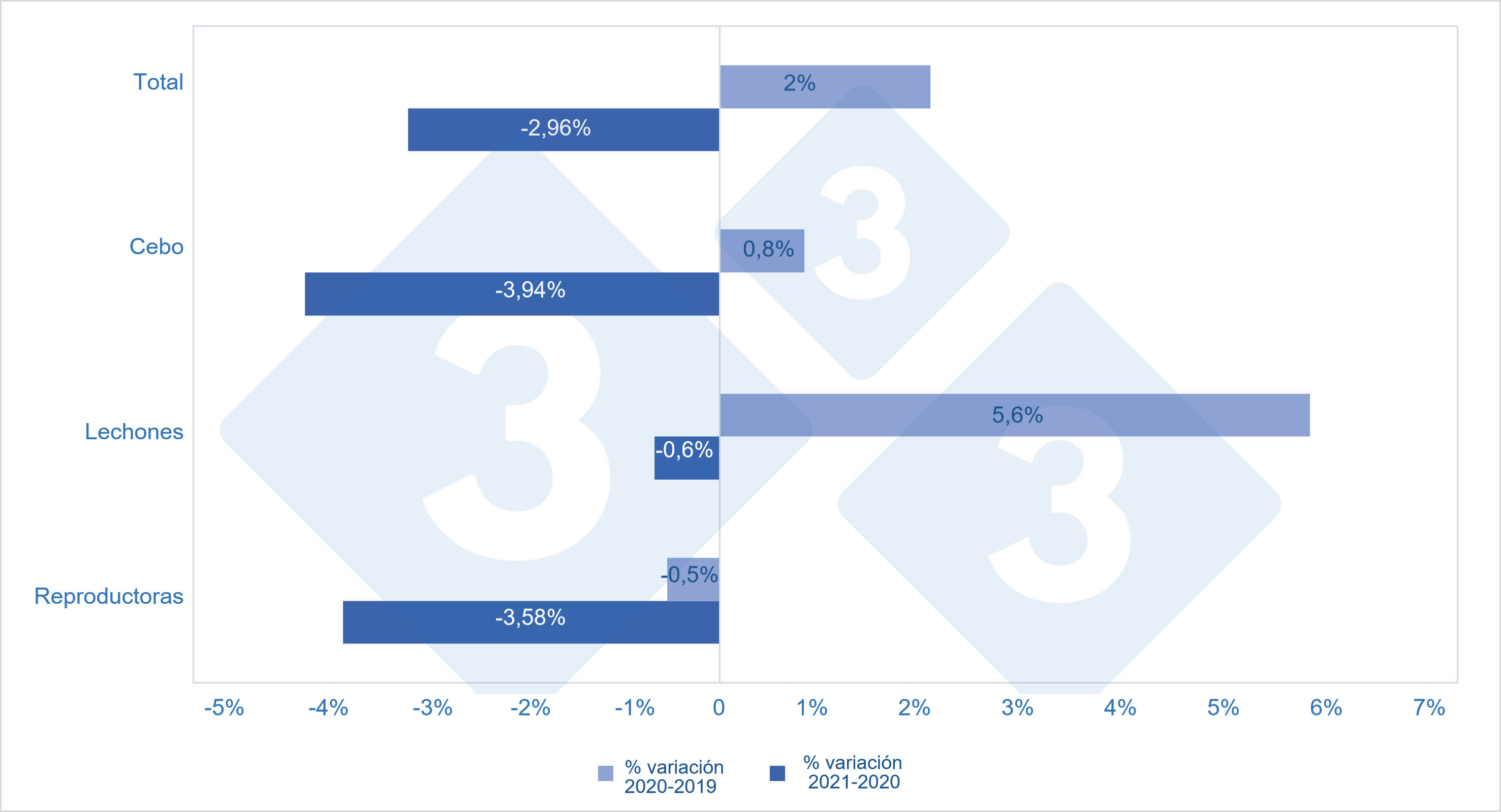
Most EU27 countries have suffered decreases in the total inventory, with increases only seen in Bulgaria (+17.32%; In 2020 the country already had an increase of +20.4% compared to 2019), Latvia (+6%), Spain (+5.05% or +1.66 million head), and Ireland (+2.08%). Cyprus and Romania saw values very similar to the previous year. On the other hand, the biggest decreases were in Slovakia (-16.8%), Poland (-12.66%), Greece (-12.51%), and Germany (-9.39% or almost 2.5 million head less).
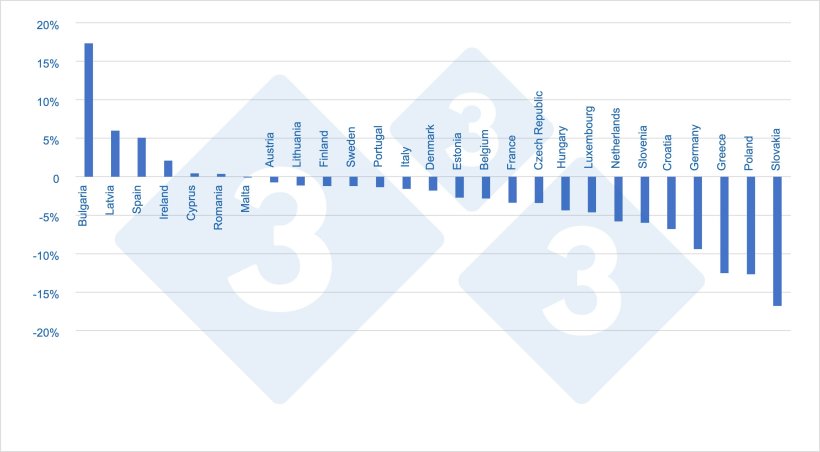
Variation in the total inventory by country (2021 vs. 2020)
Spain is once again the leading pig producer in the EU-27, increasing its share in the total by 2% compared to last year, making up 24.34% of the total European herd, followed by Germany with 16.68% of the total (its share down from 17.8% of the total in 2020). Denmark, with 9.29% of the total, surpasses France (9.14%) and is the third-largest producer, followed by the Netherlands and Poland. Spain, Germany, Denmark, France, the Netherlands, Poland, Italy, and Belgium account for almost 85% of the total EU-27 pig population.
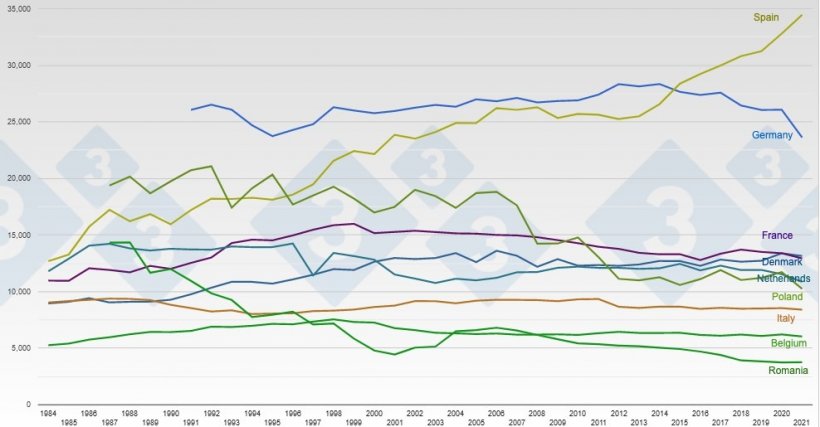
Evolution of the total pig inventories of the main pig producing countries in the EU27 (x1,000 head).
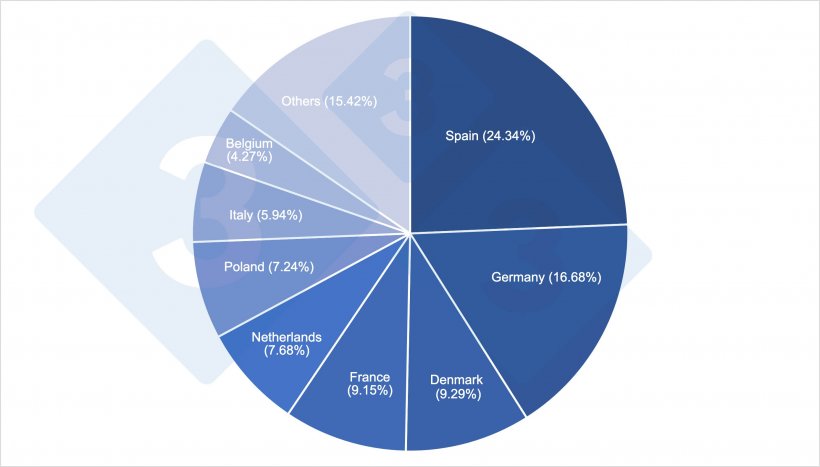
Share of the main EU27 pig producers in the total inventory in 2021.
In our pig production data section, you can view and compare data in graphical format by country and category.
March 14, 2022/ 333 Staff.





